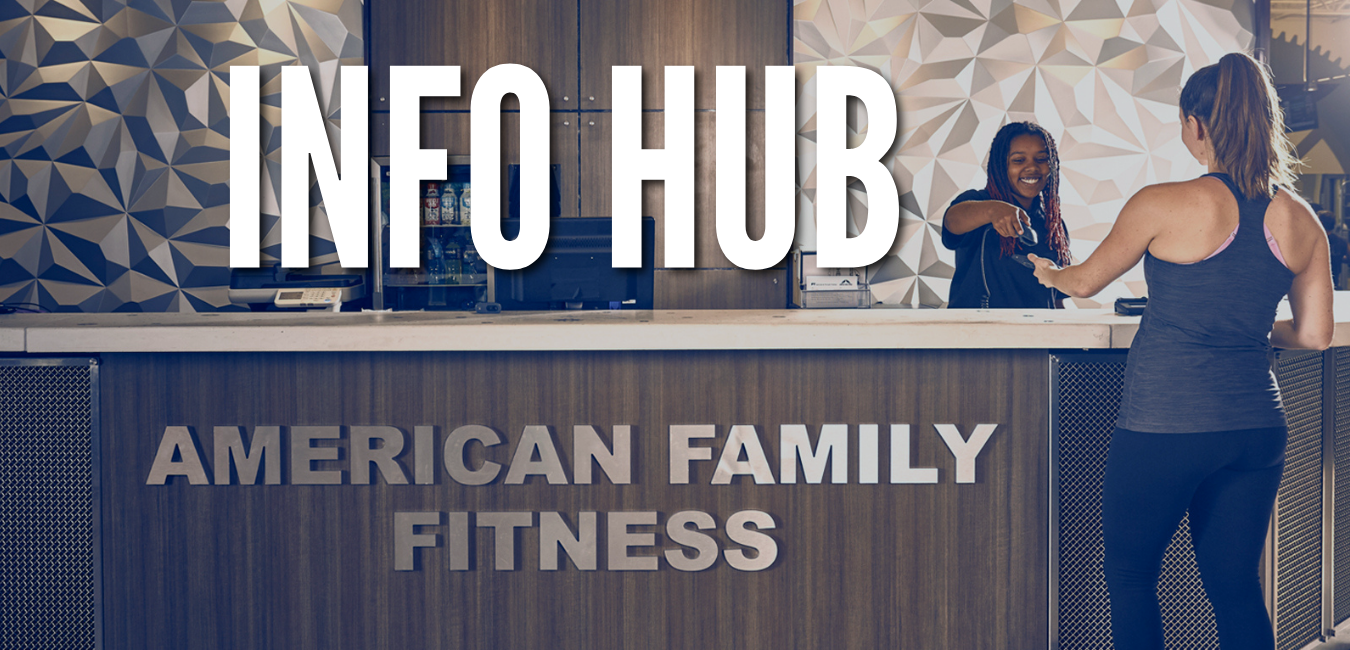
You live, eat, and breath lifting. Just the thought of moving a heavy barbell or the sound of bumper plates hitting the platform hard after a heavy lift makes your heart skip a beat. Your weekends are dedicated to your lifting schedule for the upcoming week. And you make the time every day to pump iron because you NEED it to feel normal.
The number one thing that any fitness professional recommends in a training program is strength training, and with good reason. Strength training builds muscle mass that helps control body fat, it increases bone density and improves joint health, and it reduces your risk of injury when done safely and with proper form. It’s also a REALLY cool feeling to be able to lift something heavy and pull it, push it, carry it, or hold it without much of a struggle.
In order to move an external load in any direction with ease, you need:
- Good joint range of motion
- Awareness of your body
- Adequate oxygen supply to your working muscles
- A strong core
- Time to recover physically and mentally in between lifts
- Practice moving your body in all different directions
All of these can be developed and practiced simultaneously with just one thing – Yoga.
Yoga is Sanskrit for “union” and is a spiritual and physical practice that combines physical poses, breathing practices, and meditation to gain spiritual enlightenment. Yoga is widely practiced for its physical and mental health and wellness benefits – it improves circulation, digestion, and metabolism, it increases relaxation, and it decreases stress.
Another benefit of Yoga? It will make you a better lifter. Here’s how:
Yoga Improves Your Mobility
You need to be mobile in order to live your life, whether that be deadlifting 385 off of the platform or deadlifting that huge bag of mulch when working in your yard. Mobility is the ability to control a joint as it moves through its given range of motion without constriction of nearby soft tissue. Practicing movement of a joint through its full range of motion will enable you to develop better movement strength so you can ultimately add external load and move through that same range of motion. This will make your time spent in the gym more efficient as it will enable you to burn more calories, develop greater strength, and crush those PRs with ease.
Yoga encourages movements at nearly every joint in your body. And because you are using your bodyweight, you can practice mobility through a full range of motion safely before adding external load in your lifts. Proper mobility decreases risk of injury in your lifts and promotes resiliency in your body1, so having this mobility enhanced prior to adding that barbell on your back will make your lift even better.
If you’ve already been incorporating mobility work into your routine, awesome! You’re one step ahead of the mobility game. There are some amazing mobility WOD programs out there like ROMWOD or GOWOD that give great guidance on mobility work specific to your lifts. But if you’re already doing this mobility work, you’re also going to be one step ahead in your Yoga practice – many mobility drills are similar to or derive from Yoga poses, they just have different names in Yoga or are performed as part of a larger sequence of several poses rather than as a drill with a set number of repetitions like a mobility WOD. You may be surprised by how many Yoga poses you’ve already done without knowing it!
Yoga Connects Your Mind To Your Muscles
Did you know that just thinking about working a certain muscle can make it stronger? This is known as the “mind-muscle connection” and it involves deliberately thinking about a target muscle activating in order to optimize muscular performance. Multiple studies over the past several years have indicated a strong connection between mind and muscle, including a 2017 study published in the European Journal of Applied Physiology that found this connection enhanced muscular activation of the pectorals and triceps when thinking about these muscles during a pushup and bench press.2
Yoga includes the practice of mindfulness with movement and breath. A typical Yoga practice may start with some awareness of the breath, simply noticing how your breath is flowing through the body, and may move into a more specific breathing practice to enhance this awareness of connection to breath. The breath is then connected to movement, and while you may hear cues related to alignment for safety, you may also notice cues about energetics in a pose: Where does the breath go? Ground down through the soles of the feet into the earth. Feel your heart expand as you reach your arms wide. These awareness cues connect your mind to your body in the moment, and is practiced with each pose in each subsequent practice, deepening this mind-muscle connection that will serve you in your lifts.
Yoga Optimizes Your Breath
A good breathing pattern is just as important as a good squat pattern – if your muscles don’t get the proper amount of oxygen during your heavy lifts, they won’t get full effects of the lift. It’s like coasting through your lift with your gas tank on empty. Your muscles need oxygen during your lifts to perform their best. Oxygen travels to your working muscles during exercises to convert glucose into ATP (Adenosine Triphosphate), the molecule responsible for storing and transferring energy in cells, helping to give you the energy you need to lift your best.
The practice of breathing is known in Yoga as Pranayama, and “Prana” is Sanskrit for “life force”. Think about this for a moment – the practice of breathing in Yoga involves the flow of life force through your body. From a fitness perspective, this is the flow of oxygen to your working muscles to create energy. There are several Pranayama techniques that enhance the flow of energy through the body with emphasis on and awareness of enhancing the breath. Regular Yoga practice can instill proper breathing that recruits your diaphragm, the muscle in your trunk whose primary function is breathing. Just like any other muscle, you must exercise it in order for it to become stronger. Strengthen your breath, improve the energy exchange in your muscles, and you’ll ultimately strengthen your lifts.
Yoga Gets To The “Core”
Can you lift without a strong core? Maybe, but you’re putting yourself at great risk of injury. You can definitely train your core strength without Yoga, but remember that mind-muscle connection? You need purposeful awareness of your core so you avoid injury during your lifts, and Yoga will help you develop that connection. From the beginning of a Yoga practice, your core is engaged by activating Mula Bandha, an energy lock that draws the pelvic floor up. You’ll move through sequences that specifically challenge your core musculature like Plank, Side Plank, Chaturanga, and Boat Pose, to name a few. You may even hold some of these poses isometrically and focus on breathing into the pose, deepening your mind-muscle connection, and improving core stability. And think of other arm balances that you’ve seen Yogis do on Instagram, like Handstand, Grasshopper Pose, or Crow Pose. How do they do that? They use core strength developed through a dedicated Yoga practice.
Yoga can also help you get to your “figurative” core, meaning the essence of who you are. This takes practice and patience, and goes beyond the physical practice of Yoga. You may be feeling like your lifts haven’t been progressing, or that you need a change to some aspect of your training regime but you’re not quite sure what to do. Yoga won’t give you a direct answer to these questions, and there’s no guarantee that you will ever truly get to your own core being; however, you may be able to learn more about yourself on your mat, like what feels right in your body, what helps ease your mind, and what brings you joy – all of which you can take off of your mat and implement into your lifts.
Yoga Is An Opportunity For Your Body To Recover
Lifting places stress on the body, and while this type of stress benefits the body by increasing muscle mass and bone density over time, overdoing this stress by repetitive movements without variation can place stress on your joints and nervous system. Repetitive stress injuries are common without movement variation and can lead to connective tissue dysfunction at the level of the joint. And when your body is under continuous stress, it remains in “fight or flight mode”, leading to an increase in production of cortisol, a stress hormone that can lead to the breakdown of muscle and cause weight gain. Yoga is an opportunity to de-load the body and reduce stress in all these areas. After lifting heavy loads, moving your bodyweight can feel effortless (with the proper mobility, of course) and many of the poses offer your hard-worked muscles the opportunity to lengthen and release tension. Breathing practices incorporated into a Yoga practice help to activate your parasympathetic nervous system and induce relaxation by enhancing blood flow to the endocrine system, brain, spinal cord, and cranial and spinal nerves.
Yoga Offers Variability In Your Training
Think about your lifts – are you moving the weights in the same direction often? Think outside of your workouts – do you have any movement limitations, like bending and reaching to pick up something you dropped out of reach or reaching from the driver’s seat to the backseat of the car? You may be lifting and seeing gains in muscle mass, but if you’re not moving your body in a variety of directions purposefully as part of your training routine, you’re setting yourself up for potential injury.
A Yoga practice can take you through all three planes of motion, listed below:
- Sagittal: moving up and down or forward and backward (ex: bicep curl or squat)
- Frontal (or Coronal): moving away from or toward the midline of the body (ex: lateral deltoid raise, cable chest fly)
- Transverse: rotation (ex: Sledgehammer Slam with Med Ball, Kettlebell Halo)
Be honest…how often are you purposefully training your body to move through all three of these planes of motion? Our bodies need variability in movement in order to be healthy and prepared for any expected or unexpected movement. Many poses and sequences in Yoga take you through all three of these planes of motions seamlessly, reinforcing mindful movement through these planes of motions that you can take off of your mat and into your daily life. Yoga can also offer variability on different skills training that you may be missing in your regular routine. Balance, coordination, and focus are practiced often through a variety of Yoga poses and can help prepare your body for better movement health and life.
You’ll also add variety to your mental training with a regular Yoga practice. Believe it or not, it’s REALLY fun to see what shapes you can make with your body, and some of the poses are REALLY cool! While the physical practice of Yoga is just one aspect of a holistic Yoga practice, it can be a great way to unwind from any rigidity in your regular training routine and see what else you can do without pressure from anyone (including yourself) to hit your max effort and break records. Yoga is your time to let go, have fun, and just flow.
With all of these benefits for your lifts, why not incorporate a regular Yoga practice into your routine? Take a look at our class schedules to see when you can start your practice: amfamfit.com/class-schedules.
And remember:
- Yoga = Better Lifts
- Better Lifts = More Gainz
- More Gainz = Success
American Family Fitness advises that you consult with your physician prior to beginning any physical activity, including Yoga. There may be poses that are contraindicated for you and your health. Please put your safety first and consult with your physician before attempting to practice Yoga.
- Rawlings, Jenni; “Mobility, Stability, and Flexibility: Clarifying Our Concepts In Yoga”; Yoga International, 2020. https://yogainternational.com/article/view/mobility-stability-flexibility-in-yoga
Calatayud, Joaquin; “Mind-muscle connection training principle: influence of muscle strength and training experience during a pushing movement”; European Journal of Applied Physiology, July 2017. https://pubmed.ncbi.nlm.nih.gov/28500415/

Lauren Rinker is the Group Fitness Manager at Virginia Center Commons and teaches a variety of classes, including POWER®, CORE®, BLAST®, Yoga, and Fusion small group and team training. She started her Group Fitness career in 2012 after her childhood dream of being a 🌪 chaser didn’t work out due to immense fear of 🌪s, and accredits Group Fitness for transforming her life 💪. She loves how Group Fitness and Social Media share the same impact of making and maintaining meaningful connections between people ❤. When she’s not teaching or taking 📷s for the VCC Facebook page, you can find her 🏋️♀️-ing, 📚️-ing, checking off her To-Do lists 📝, drinking ☕️, or eating any or all of the following foods: 🍣🥞🥓 A self-proclaimed cat lady 😻 and night owl, Lauren loves to recharge in the evenings by watching Netflix with her two Instagram-famous cats 🐱 🐱
Article contributed by Geraldine Chapman
Geraldine Chapman is the Director of Information Marketing & Social Media at American Family Fitness in Richmond, VA. She’s been in the fitness industry professionally since 1997 as a personal trainer, group fitness manager, and fitness instructor. She has trained and certified in multiple fitness programs over the years. Her favorites to teach are barre, Active®, Blast®, and Power®. Geraldine graduated from Virginia Commonwealth University with a B.A. in Communication Arts & Design. She is also a Certified High-Performance Coach and Applied Neuro Strategist. She is passionate about researching autoimmune diseases and how lifestyle, fitness, nutrition, and mindset play a vital role in the prevention and management of autoimmune issues. When not working, you can find Geraldine with a camera in hand, enjoying quality time with her family and riding her motorcycle around town.






